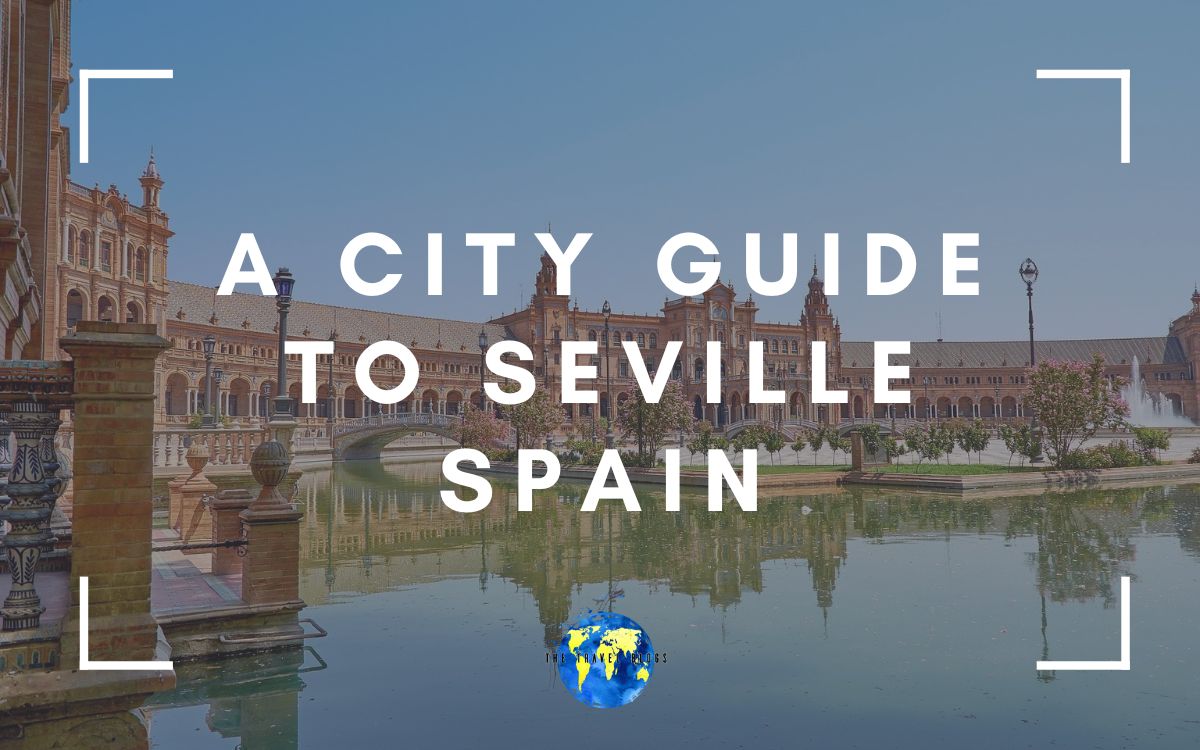Seville in Spain, or Sevilla (pronounced See-bee-yah), is the capital city of Andalusia and the perfect example of a place shaped by its history. Located in the province of the same name in southern Spain, it sits on the fertile valley of the Guadalquivir River with 141km2 area (14,100 ha) of land, the largest city in the region. If we could describe the city of Seville in one word, it would be “proud” – proud of its heritage, culture, architecture, and way of life – and proof of this can be found throughout the city.
This guide will take you through the best of Ciudad Sevilla, highlighting both famous tourist attractions and hidden gems, as well as providing you with a wealth of useful information to help you plan your journey.
Coming your way in this post - click to expand ->
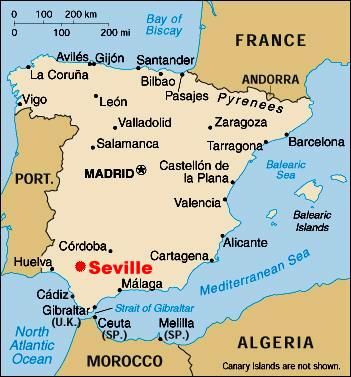
History of Seville
The history of Seville starts in the 8th century BC. Seville’s primary inhabitants were the indigenous Iberian people of Tartessos, and they called its core town Spal or Ispal. The Tartessians were traders who controlled the Guadalquivir Valley from the 8th to 7th century BC. They were culturally influenced by their Phoenician trading partners down in Gadir, or what we now call Cádiz.
When the Roman Empire took over the Iberian Peninsula afterward, they called it Hispalis, the Latinized version of Ispal, and made it a part of Hispania Baetica. Hispalis thrived in trade and craftsmanship, growing into one of the most important commercial and industrial Hispano-Roman centers of Baetica.
During the Umayyad conquest in 712, which established the Al-Andalus, the Moors took Seville from the Christian Visigoths. The city became a bustling capital for Moorish kings, developing a complex blend of religious cultures that is still evident today. They called Hispalis Išbīliya or Ishbiliya, its Arabic version. After five long centuries of Moorish rule, the Crown of Castille (soon to be Spain) took over Seville through the Reconquista (Reconquest) in 1248. The Catholic Church then began converting many Moorish and Gothic buildings into Catholic edifices, a customary undertaking during the Reconquista period.
After this time, it was a blur of exciting new developments for Seville. Christopher Columbus’ departure to the New World in 1492 opened the economic trade with the Americas through the Guadalquivir River. It established Seville as the commercial capital of the Spanish Empire in the 16th century, paving the way for the Golden Age of Spanish arts and literature and inspiring the works of many prominent Spanish artists. This period saw the most remarkable blooming of the city’s culture. After the decline of colonial trade and a series of disasters in the 17th century, Seville slowly rebuilt itself to what we now know as the soulful city of Andalusia.

Seville Spain Weather and Climate
Before you go on your trip, you should know that the climate of Seville is Mediterranean. That means hot, dry summers and mild winters with moderate rain. The weather in Seville, Spain averages 25.4°C (78°F) during the day and 13°C (55°F) at night, making it the warmest city in Continental Europe.
In July and August, it experiences high temperatures with a maximum above 35°C (95°F). The coolest month is January, with average maximum temperatures of 16.0°C (61°F) and a minimum of 5.7°C (42°F). Meanwhile, December is the wettest, with an average rainfall of 99 millimeters (3.9 in).
In between is just more of summer and sunshine in this city of 1.5 million Sevillanos. Be sure to wear cool thin-layered clothes and comfortable shoes, especially if packing in as much as possible with a 2-day Seville itinerary.
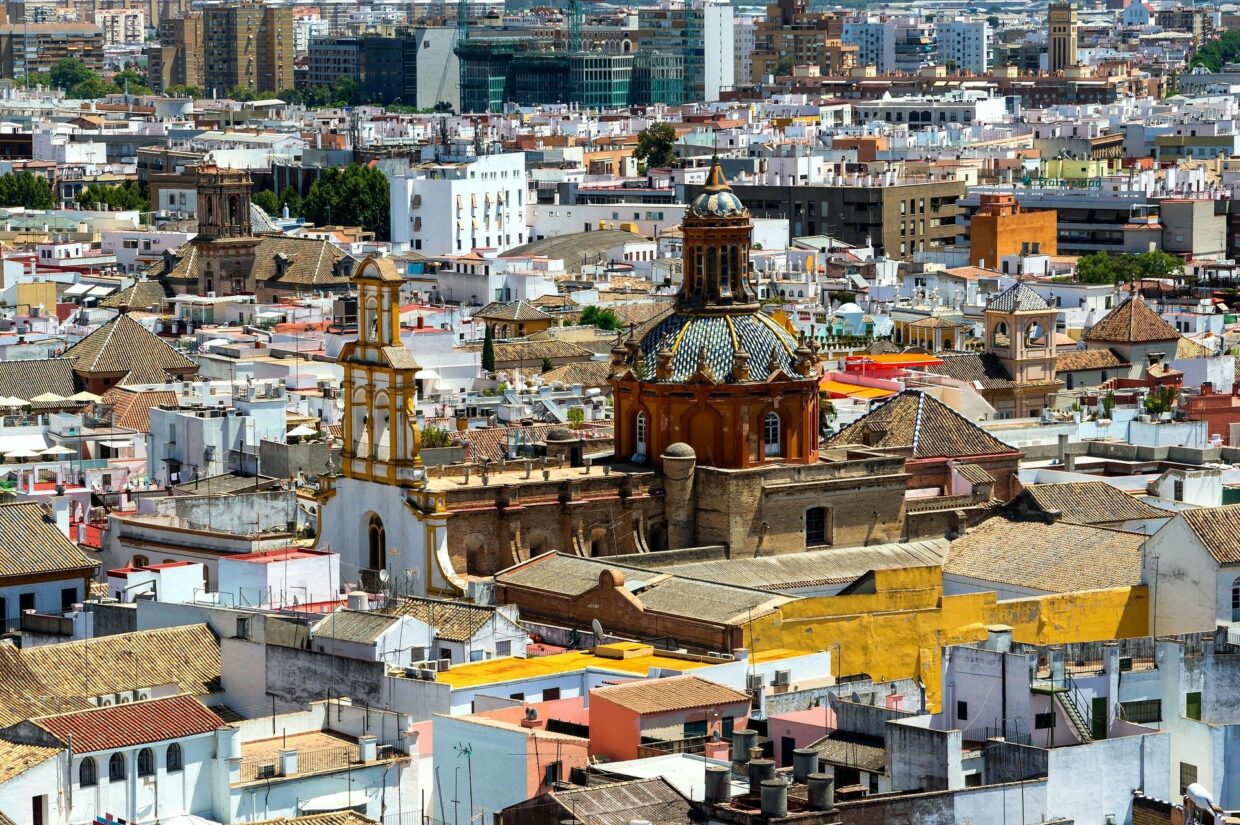
Activities in Seville Spain
There are many exciting things to do in Seville, Spain, but the following recommendations are fundamental.
Take a guided Seville tour.
Seville is full of historical and equally magical places to visit. The Triana Bridge is an iconic metal arch bridge built in 1852 that connects the almost-island neighborhood of Triana to the city center.
Just behind the Alcazar, Seville’s monument to Christopher Columbus proudly stands 23m (75ft) high in Jardines de Murillo, commemorating the voyager’s legacy and the empire that supported his travels.
In Plaza Nueva, you can take a picture of the city hall, built with an impressively articulated façade in Plateresque-style architecture, complete with Italian Florentine grotesques and historical characters carved on the walls.
Built in the 18th century, the Royal Tobacco Factory was the second-largest building in Spain (second only to the royal residence) at the time of its completion and is prominent for its contribution to Europe’s tobacco industry.
Walk the streets of Santa Cruz, Seville.
All cities have beautiful stories to tell, and Seville’s are best described by its neighborhoods. One of them is the barrio of Santa Cruz in Seville, also known as the Seville old town.
It is a maze of narrow streets and whitewashed houses that once belonged to the city’s Jewish community. Wander through the Seville streets and discover secret palaces, churches, tapa bars, and restaurants. Other noteworthy neighborhoods include the La Macarena and Triana.
Hang out at the parks and gardens.
The María Luisa Park is the pride of Seville tourism, with its labyrinth-like paradise of lush trees, spring pools, Moorish-style benches and fountains, and monuments. Its centerpiece is the Plaza de España, built for the Ibero-American Expo in 1929.
Due to its beautiful old architectural designs, popular shows often use the park as a filming location, including the Star Wars movie franchise, where shots of the City of Theed on the Planet Naboo showed the grounds of Plaza De España, Seville. Another noteworthy stop in this park is the Plaza de América.
It is flanked on each side by two museums, the Royal Pavilion and the popular Park of the Pigeons. This plaza features ceramic roundels of Miguel de Cervantes and Rodríguez Marín, illustrating their life’s work in vivid colored tiles.
See Flamenco shows in Seville, Spain.
It’s no surprise that you’ll find the best flamenco shows in Seville. The city is, after all, the birthplace of the genre. The La Casa del Flamenco, a family-owned business along the cobblestone streets of Santa Cruz, hosts intimate flamenco shows every night in a mosaic-tiled inner courtyard of an old palace. If you’re lucky, you’ll be able to see international stars grace the stage with their stunning performances.
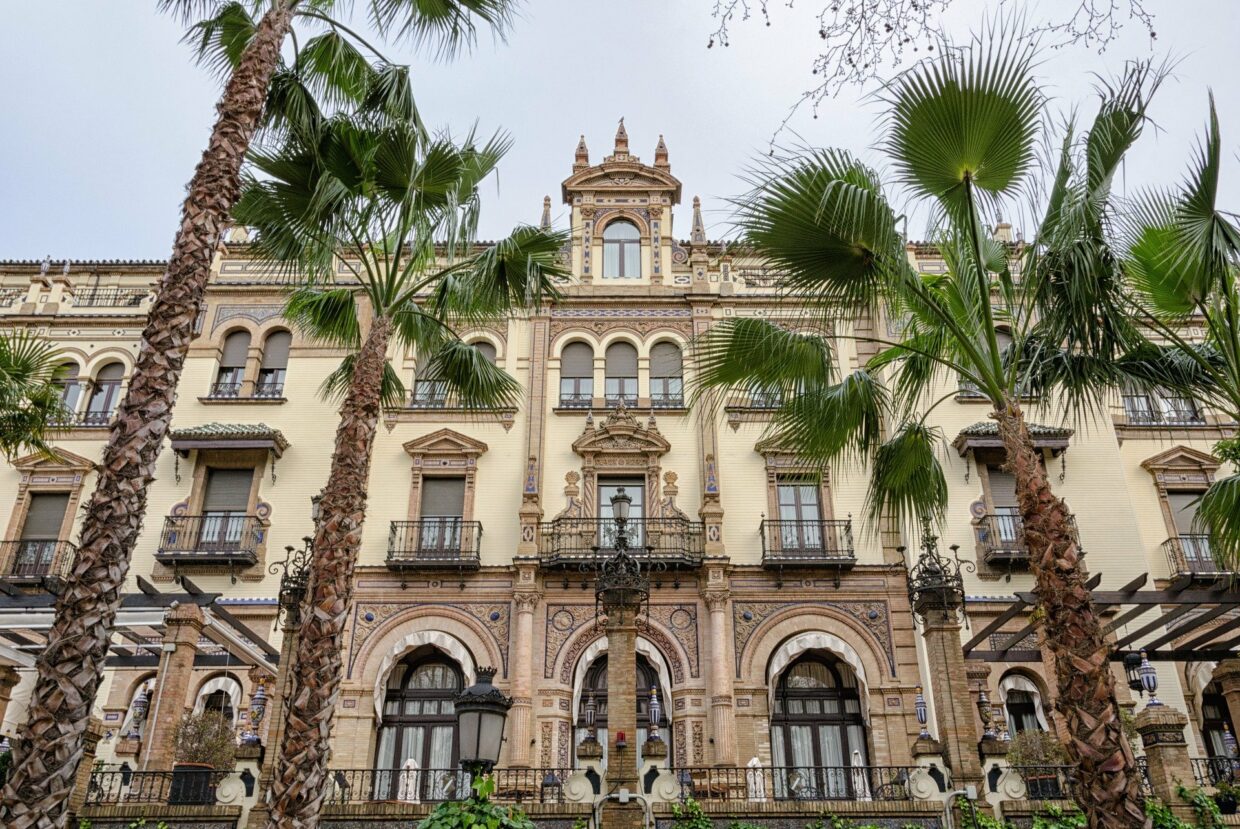
Museums in Seville
From historical structures that reflect the architecture of their time to collections that piece together Spain’s vast history, these museums in Seville will surely astound you. The city has many beautiful museums, free or at least very cheap, and the following are three of the best.
The Museum of Fine Arts of Seville
The Museum of Fine Arts, or the Museo de Bellas Artes de Sevilla, holds the city’s most important visual arts collection from the Golden Age of Sevillan painting in the 17th century. It houses the masterpieces of Murillo, Zurbarán, Francisco de Herrera, and Valdés Leal, to name a few. The building itself is equally impressive.
It was built in 1594 and served as a convent to the Merced Calzada. After the expropriation of church properties decreed by Mendizábal, the convent was converted into a museum in 1839 and underwent major renovations in an impressive Mannerist-style architecture with distinct Andalusian elements. Check out the museum’s website here.
Seville Archaeological Museum
Created by Aníbal González, this time in a neo-Renaissance style pavilion called the Pavillion of Fine Arts, this museum houses valuable archaeological finds from throughout Seville’s history. Its collections range from prehistorical items and artifacts from the Phoenician and Tartessian cultures to Moorish and Mudéjar items from the Middle Ages and some Roman objects from Italica. Articles of note include the Carambolo Treasure, a 21-piece gold treasure from the Tartessian period. Check out the museum’s website here.
The General Archive of the Indies
This UNESCO World Heritage site is the repository of precious archival documents illustrating the history of the Spanish Empire in the Americas and the Philippines. It was established in 1785, containing over 43,000 documents and some 80 million pages of original papers in eight linear kilometers of bookshelves. The building itself is impressive.
The Casa Lonja de Mercaderes is a massive, serene Renaissance-style structure designed by architect Juan de Herrera in 1584. It was commissioned to conduct the business of powerful merchants of the time. Check out the museum’s website here.
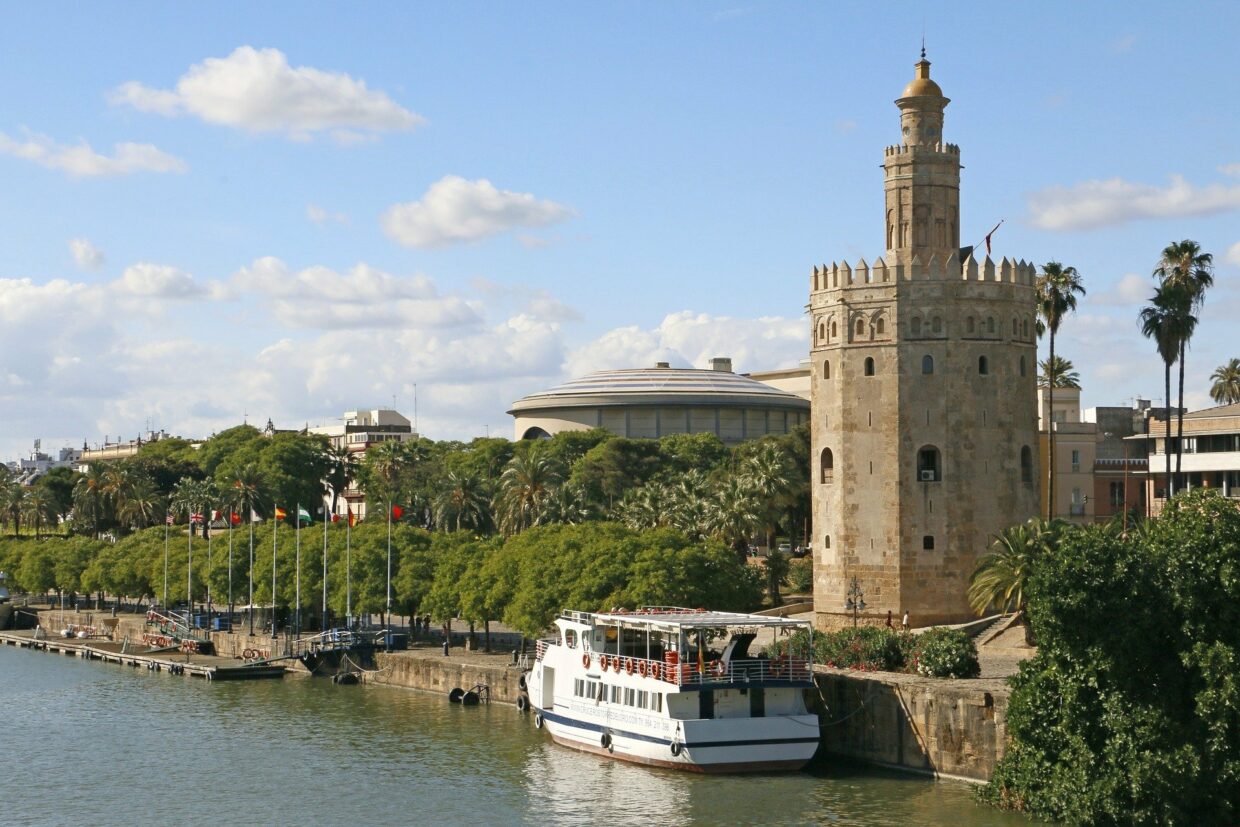
Monuments to See in Seville
One can’t say they’ve been to Seville without seeing the following city landmarks. These stunning structures are some of Spain’s most prized treasures.
Royal Alcázar of Seville, Spain.
Known also as the Real Alcazar in Seville, this structure is like no other. Designated as one of Spain’s UNESCO World Heritage sites in 1987, this place has served as home to rulers and their families for centuries. The Alcazar has undergone many renovations to appease its inhabitants, eventually becoming the architectural masterpiece that we see today. It features meticulously styled Mudejar walls and Gothic designs combined with Renaissance and Romanesque elements, elaborate rooms, and beautiful courtyards and gardens.
Seville Spain Cathedral.
Known officially as the Cathedral of Saint Mary of the See, the Cathedral of Seville is the largest in the world. This site holds kings’ remains, some famous painters’ art pieces, and the Archbishop’s Palace. It is also where the remains of Christopher Columbus rest.
The Seville Cathedral interior boasts intricate Gothic architecture with vital Renaissance elements and an impressive altarpiece with 45 panels of gold sculptures. Located near the Alcazar, its art reflected the city’s wealth in the 16th century. The original mosque’s minaret stands at 105m (344ft) and serves as the Church’s bell tower and the city’s symbol. It is now popularly known as the Giralda Bell Tower.
Pro tip: Buy Seville Cathedral tickets or book guided trips in advance.
Torre del Oro Seville.
This 36-meter (118ft) military watchtower located along the Guadalquivir river was built under the Almohad regime in the 13th century. It was initially a one-level military building that controlled access to the city via the river. After the regime’s defeat, the Castilians added the second floor. In 1760, the government added the third level as part of the tower’s renovation after the 1755 Lisbon earthquake.
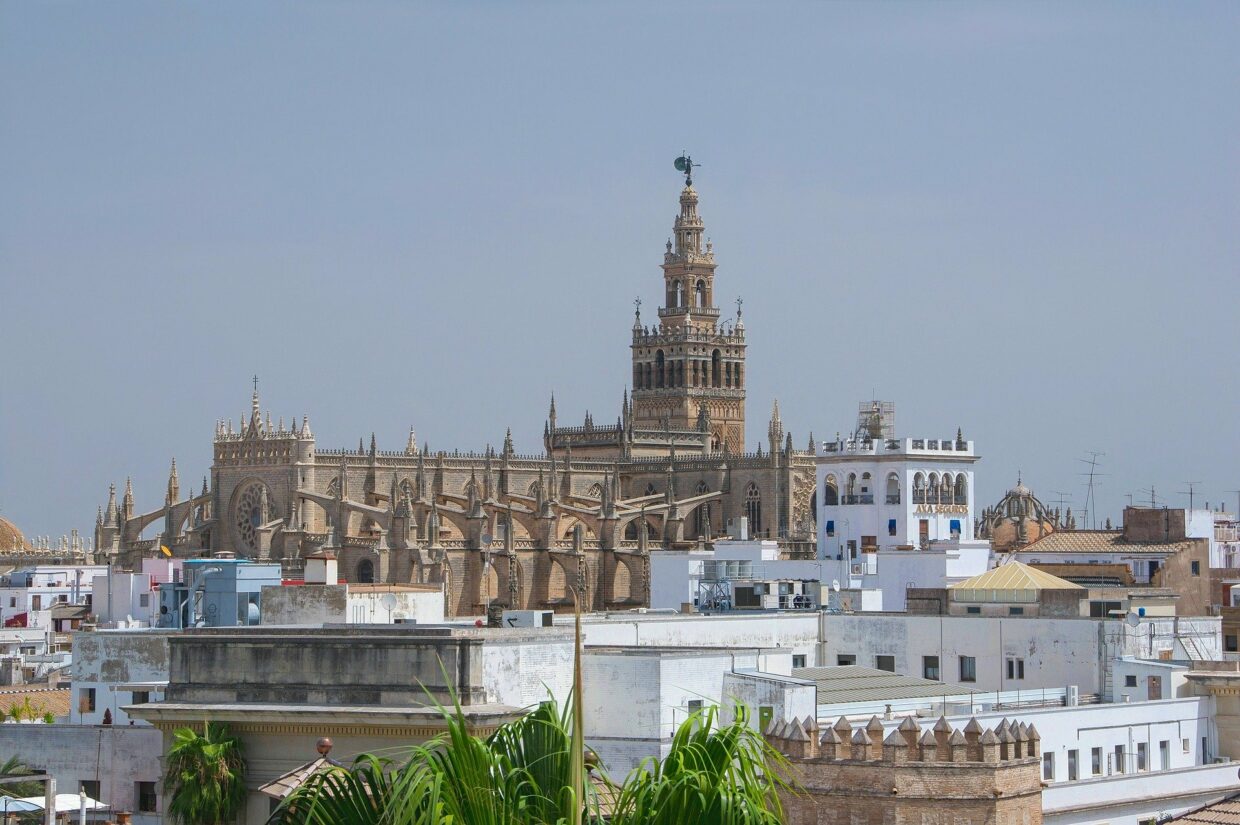
Festivals in Seville Spain
The festivals in the heart of Andalusia are never short of grandeur and fun. Here are just a few of the best festivals.
Holy Week or Semana Santa.
Religious or not, the Semana Santa celebration in Seville is one to look out for. Every April, on the week leading up to Easter, Seville performs its grand processions, where supporters carry elaborate floats of lifelike wooden sculptures (called pasos) through the city streets.
The air smells of orange blossoms and incense, and the streets are decorated and buzzing with life, yet the music and feel of the parade are solemn. Some sculptures like the Virgin of Macarena (or simply La Macarena), a beautiful 17th-century wooden image of the weeping Virgin Mary, are of grave cultural and spiritual importance to the community.
Feria de Abril de Sevilla.
Two weeks after the Semana Santa, the Seville April Fair officially starts. In a fairground at the Real de la Feria, families, clubs, private associations, and even political parties set up rows of marquee tents (or casetas) for partying and dancing.
You can see people dressed in colorful Sevillian traditional clothing drinking sherry cocktails on the streets, eating tapas, and having fun in Spring. Witness Seville bullfighting at the La Real Maestranza as they hold their most crucial and well-known bullfighting season.
Velá de Santiago y Santa Ana.
In Triana, Seville, one of the grandest and most awaited festivals in all of the city, is held every July. It features passionate dances and music, displays of exquisite Sevillian cuisine, night booths that create a relaxed yet festive vibe, and live performances in the streets and at the Plaza del Altozano. It perfectly highlights Triana’s historical and cultural contributions to the city.
Bienal de Flamenco.
Every two years, the city holds the biggest Flamenco festival in the world. The Bienal de Flamenco is a month-long celebration between September and October held in different venues, featuring the best flamenco performances of famous stars from all over Spain. The first Bienal was held in 1980 and has since been carried out up to this day.
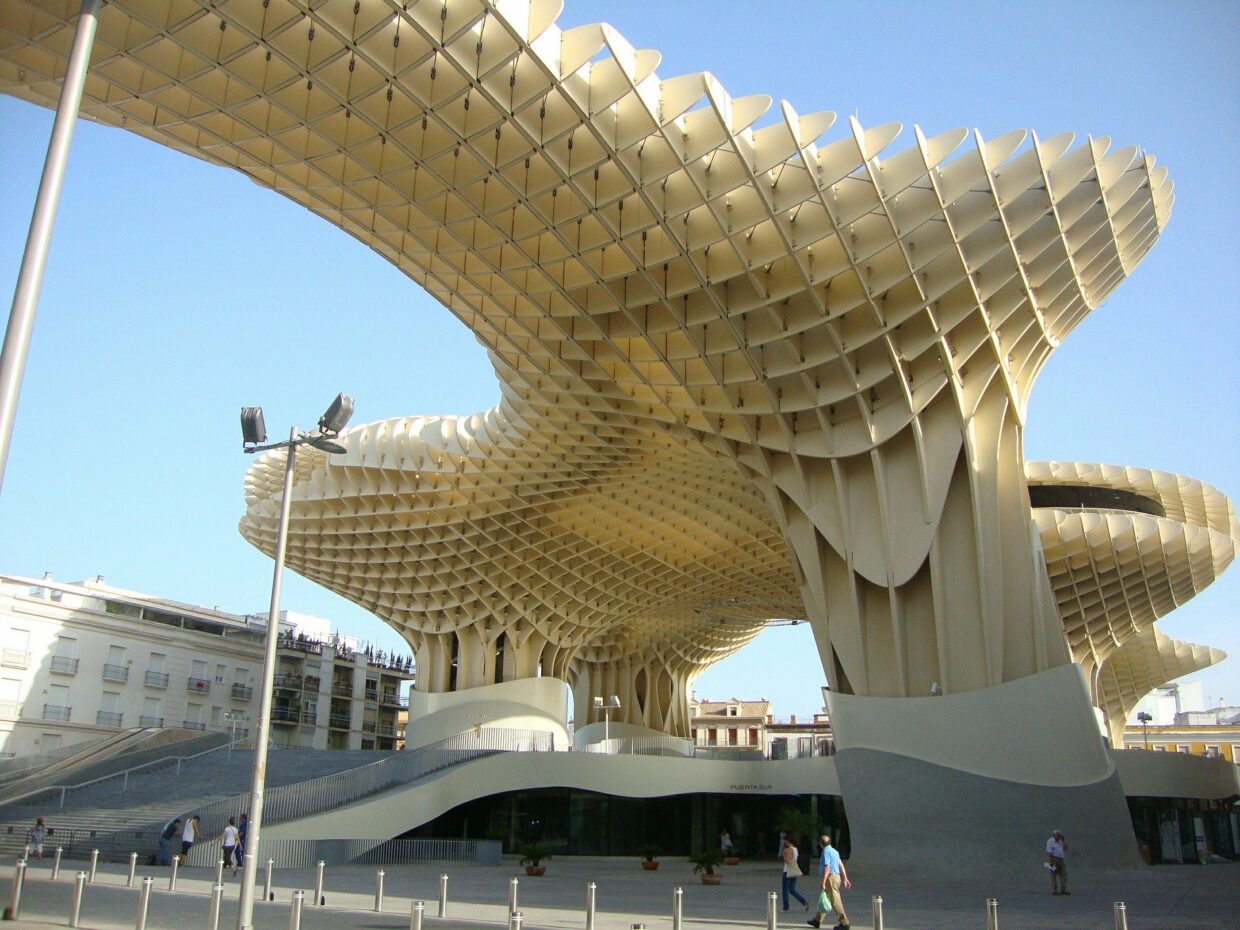
Shopping
Seville shopping is defined by the allure of its pedestrian-zone shopping centers. You’ll find beautiful flamenco dresses and restaurants serving exquisite Sevillian tapas in Alfalfa, Seville. In Nervion and Triana, there are ceramics and many major multinational brands lining the streets. Meanwhile, in Los Remedios, Seville shops mainly house fashion accessories and home decor. Elegant fans and traditional clothing items adorn the windows of Seville’s shopping centers.
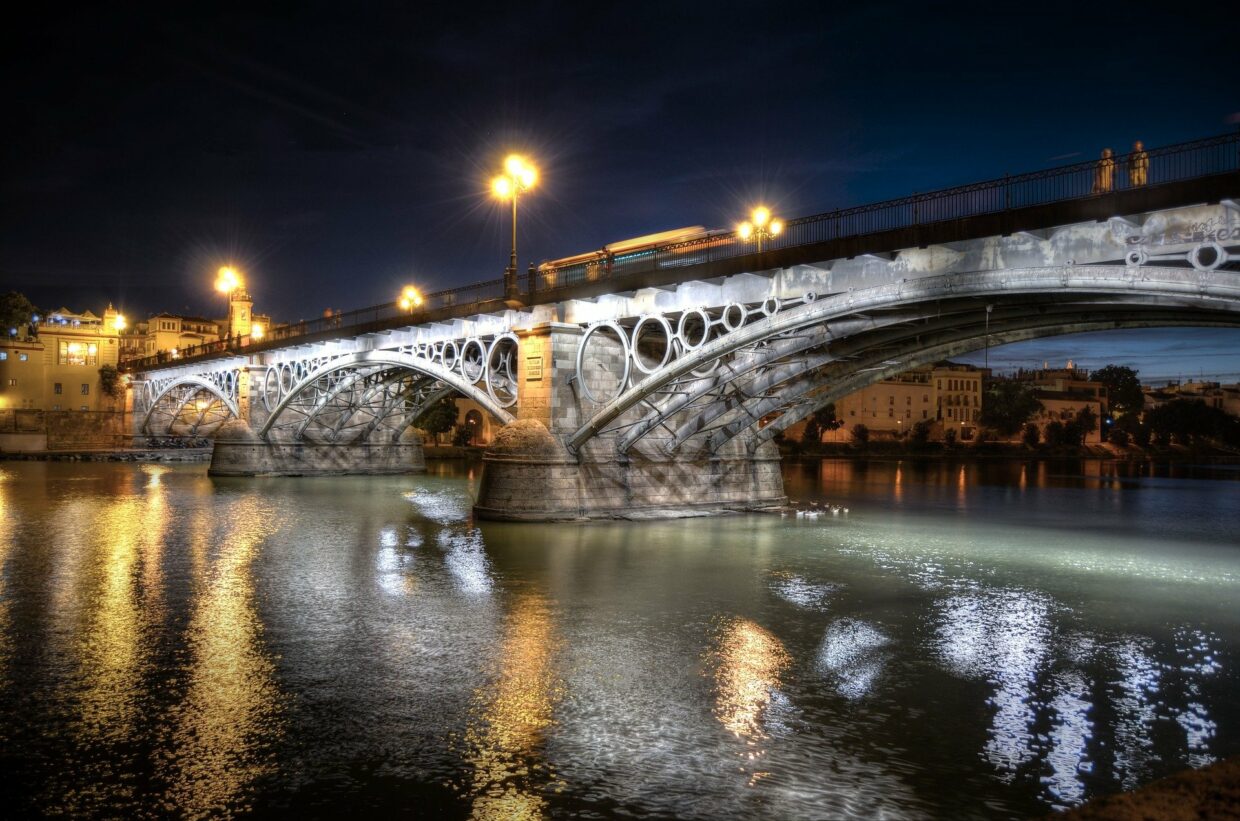
Day Trips from Seville
Seville is a fantastic city surrounded by equally impressive places. While you’re here, consider visiting the following nearby locations and experience the complete Seville tour.
To Cadiz and Jerez de la Frontera.
Not only is Cadiz home to many beautiful sights and cultures, but its town, Jerez de la Frontera, is the birthplace of the famous Sherry wine. Tour bodegas, see the vineyards, and tour the seaside of Cadiz.
To the white towns of Andalusia and Ronda.
Follow in the footsteps of artists, poets, and dreamers on a day trip to the beautiful town of Ronda from Seville. Spend the entire day visiting unforgettable towns and famous monuments including the Puente Viejo and Arco de Felipe V.
To Gibraltar
Experience the culture and learn the history of the place firsthand. Climb the rock of Gibraltar and eat good local cuisine.
To the best beaches of Andalusia.
Seville itself is shy of beaches, surrounded by land on all sides, but it doesn’t mean there are no great beaches near Seville. Spend a day bathing in scenic Andalusian beaches or tour the ruins of the ancient Roman town of Baelo Claudia.

Places to Stay in Seville
There are many places you can stay while you are in the city. Fortunately, many of them are conveniently situated in the city center, where famous landmarks including one of Spain’s largest gothic Cathedral and the Alcazar are within walking distance.
Prices range from very cheap to extravagantly high, depending on the accommodations available. Typically, you’ll find more affordable accommodations in January (low season) and in July when it is sweltering in Seville, so opting for a place with a pool is a brilliant idea.
The hotels in Seville, Spain, range from budget-friendly to downright luxurious. The rule is to book well in advance through the hotel’s official website or legitimate booking sites. Hotels like the Las Casas de la Juderia, the luxurious Hotel Alfonso XIII, and the Vincci La Rabida are examples of popular premium stays that offer complete accommodations.
There are also many B&B, pension house, and hostel choices you can choose from that will make your Seville stay enjoyable and worth it.
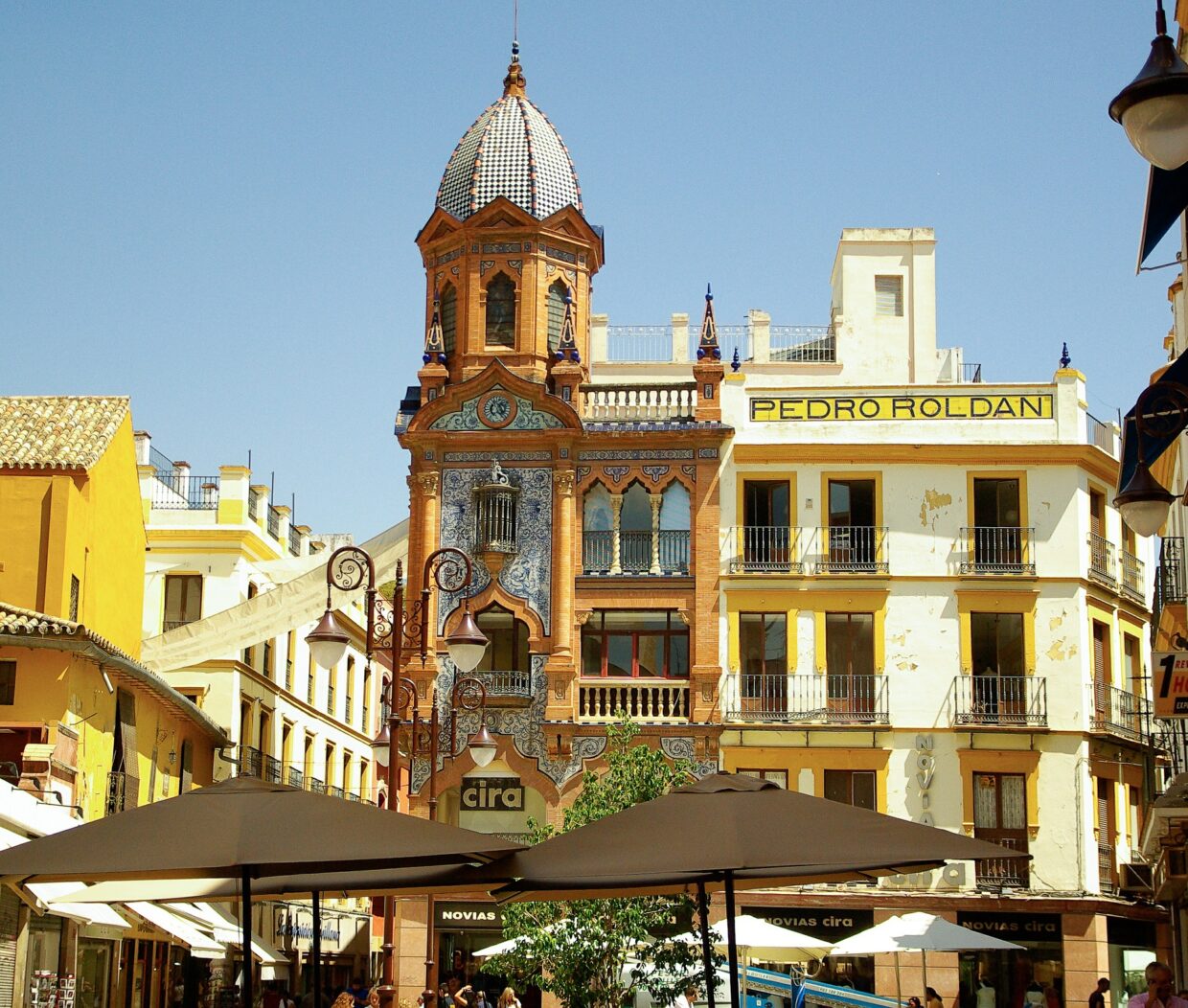
Restaurants to Eat in, in Seville
Seville’s food culture is the epitome of Andalusian cuisine. Everyone has a different opinion on the best Sevillian restaurant because, truthfully, there’s no single best one.
Seville Spain restaurants are known for their many tasty breakfast choices, beautiful food art, and perfect pairings of food and drinks. Some of the popular choices include the Michelin restaurant Abantal near the Sevilla Santa Justa train station, Abades in Triana, Restaurante Oriza near the Alcazar, the Bar El Comercio in Calle Lineros, the Zelai near Plaza San Francisco, the Alfalfa bar in Calle Candilejo, and the La Cacharreria de Sevilla.
The restaurants in Seville, Spain, can be found in all parts of the city, and many of them surround popular tourist spots. For a complete list of restaurants and reviews check out Tripadvisor here.
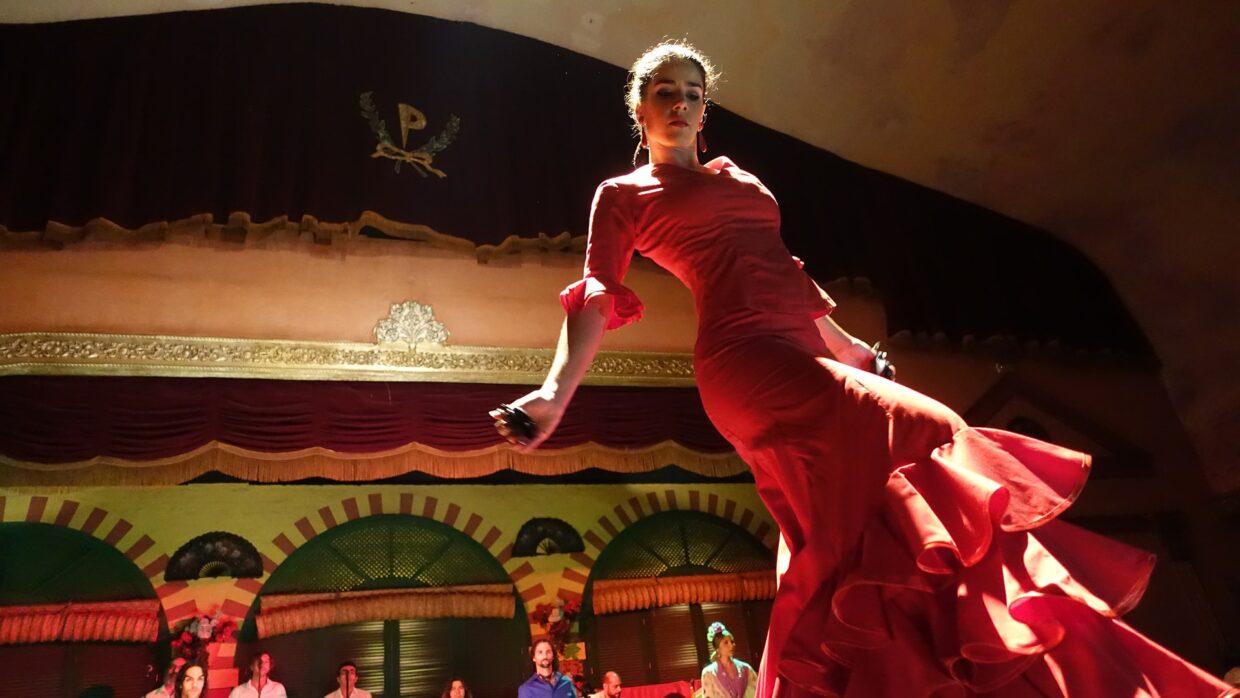
Drinking and Nightlife in Seville
The Seville nightlife and drinking scene has a range, and that’s an understatement. The heart is undoubtedly Alameda de Hércules. Located in the northern part of the city, La Alameda has this chaotic all-around energy from cozy, and relaxed to chaotic party clubs that feature live music and performances every night.
Meanwhile, Calle Betis is known for its tapa bars and flamenco joints, and discos. The streets of Alfalfa provide a perfect venue for all-night partying and dancing. On the other hand, Paseo de Cristóbal Colón gives a sophisticated vibe for their modern Spanish mixed drinks, chic lounges, and rooftop terraces.
The city has many drink options, such as beer, wine, spirits, and cocktails.
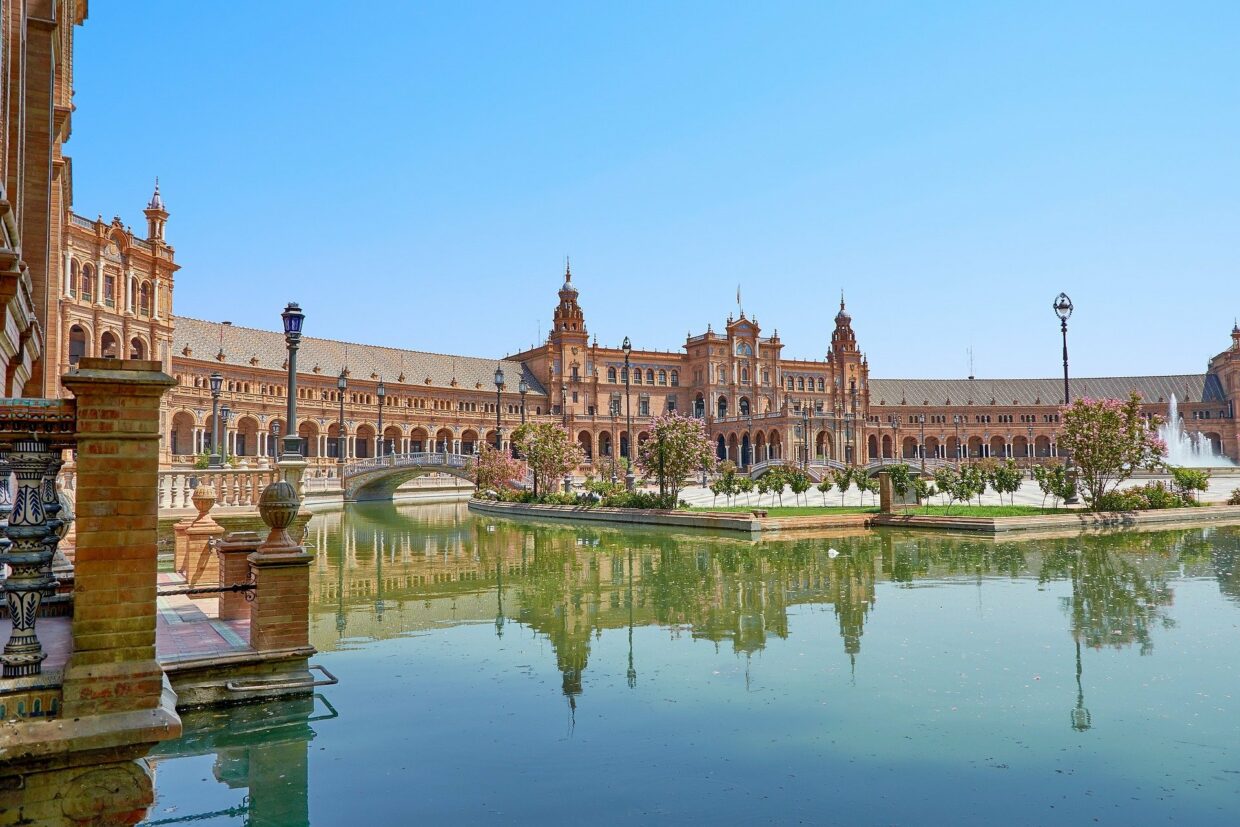
How to Get to Seville, Spain
Airport
Seville has an international airport, known simply as Seville Airport or San Pablo Airport (SVQ), located 10km (6.2 mi) east of central Seville. Flights to Seville, Spain, run all year. From there, you can take the airport’s urban bus transport line (Line EA) accessible just outside the main terminal to arrive directly at the Plaza de Armas bus stop in the city center, or vice versa.
The whole ride takes about 40 minutes and costs 4-6 euros. The bus line runs 365 days a year. You can buy your ticket on board. It also stops at Santa Justa train station, the third-busiest station in Spain, located 2km (1.24 mi) northeast of the city center. It supports travels from Seville to Cordoba, Cadiz, Ciudad Real, Málaga, and Madrid, to name a few. Other transport choices include taxes and car rentals.
Train
Thanks to Spain’s national railway network, you can reach Seville’s Santa Justa train station using AVE’s high-speed trains from Barcelona, Madrid, or Cordoba to Seville and using the AVANT trains from Malaga. You can also take a train from London and arrive at Seville, made possible by Europe’s high-speed connections.
Bus
It might not be the fastest way to travel, but riding the bus to Seville is an economical option. The Plaza de Armas bus station has connections to all Andalusian capitals and Catalonia, Madrid, Barcelona, Faro in Portugal, and France, among many others. Located between Torneo Street and Cristo de la Expiración Avenue, it consists of 43 platforms that accommodate an average of 17,000 passengers per day. You can use it to travel to and from Seville as well as within the city.
Sevilla is a gorgeous city, and anyone can testify to that. Visit Seville and let its majestic Mudejar palaces, baroque churches, and winding medieval lanes speak for themselves.
